Those heading to Iceland during the Christmas season may be surprised to find that Icelandic Christmas traditions are quite different from those celebrated elsewhere. Instead of the typical jolly Santa Claus, Christmas in Iceland features the fascinating folklore of the 13 Yule Lads—mischievous trolls.
Along with their wicked mother, Gryla, and the infamous Christmas Cat, these characters add a unique touch to local Christmas celebrations.
Despite how spooky the stories may sound, both Christmas Eve and New Year’s Eve are cherished holidays for Icelanders. This season in Iceland includes a mix of old Norse and Christian traditions.
Below, you’ll find a deep dive into folklore of New Year and Christmas traditions.
WHO ARE THE 13 YULE LADS?
As you may have guessed, the folklore surrounding Christmas and New Year in Iceland is quite different from traditions elsewhere. At the heart of these stories are thirteen mischievous Christmas trolls who live in the highlands with their fearsome mother, Gryla, and her lazy husband, Lappalúðir. Gryla is a terrifying troll-witch who is said to hunt and consume children who have been naughty during the year.
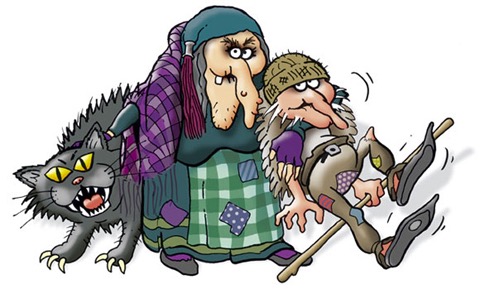
These trolls are known as the Yule Lads (Jólasveinar) and play a significant role in Icelandic Christmas. Starting on the night of December 12, children place a shoe on their windowsill for 13 nights. Each night, one of the Yule Lads visits them, leaving gifts for the well-behaved children and a raw potato for the naughty ones. Icelandic children celebrate this tradition with excitement and anticipation as they await the Yule Lads’ arrival.
I’ve only witnessed the disappointment of finding a potato once in my life, and it was truly heartbreaking experience!
DISCOVER THE FOLKLORE OF CHRISTMAS CAT
According to folklore, Gryla isn’t the only fearsome figure during the holidays. Her companion, the Christmas Cat, known as Jólakötturinn (and far from being the cute, cuddly feline you might imagine), plays a dark role as well. It is said that Gryla and Jólakötturinn round up the naughty children who have been complained about throughout the year and turn them into stew.
While Gryla is somewhat selective about who she chooses, her feline accomplice is much less discerning. The Christmas Cat will happily snatch up any child who doesn’t receive new piece of clothing for Christmas. The threat of Jólakötturinn has long been a reminder for families to make sure their loved ones are given at least one new piece of clothing as part of their Christmas gifts.
Over the years, the legend of the Yule Lads and their antics has softened, becoming more playful. However, the character of Gryla and her sinister black cat remains largely unchanged.
ICELANDIC YULE LADS
Oh boy, let me tell you about the Yule Lads! These playful and mischievous characters are the heart of Icelandic Christmas traditions. Forget Santa Claus and his gift-filled sleigh—here, it’s all about the Yule Lads.
Imagine this: thirteen trolls, each with a quirky personality, making their way down from the highlands one by one during the 13 days leading up to Christmas. What do they do? Let’s just say their antics add a fun twist to the holiday season!
STEKKJASTAUR – SHEEP-COTE CLOD
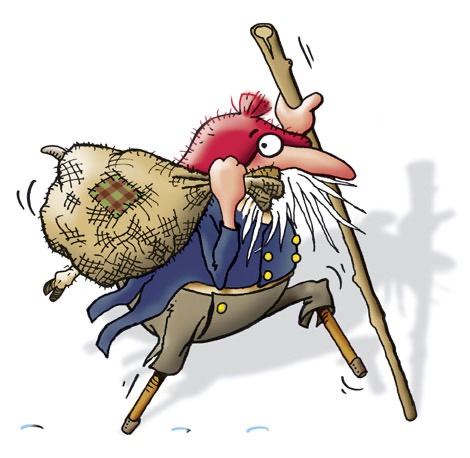
The first Yule Lad arrives on the night of December 12th, marking the start of Iceland’s Christmas mischief. Known as Stekkjastaur, or Sheep-Cote Clod, he sneaks into sheep sheds, hoping to drink milk directly from the ewes. However, his wooden legs make stealth impossible, often betraying his presence.
Stekkjastaur’s clumsy attempts to satisfy his craving kick off the quirky antics of the Yule Lads, setting the stage for the fun-filled Christmas in Iceland.
GGILJAGAUR – GULLY GAWK
On December 13th, Giljagaur, the second Yule Lad, ventures down from the highlands. True to his name, which means “Gully Gawk,” he hides in gullies, waiting for farmers to leave their cows unattended.
Once the coast is clear, he slips into barns to steal foam from freshly made milk. Giljagaur’s sneaky nature adds a sly charm to the lineup of Yule Lads, making him a favorite in Icelandic Christmas folklore.

STÚFUR – STUBBY

The third Yule Lad, Stúfur, appears on December 14th. The smallest of his brothers, his name translates to “Stubby.” Despite his size, he’s always on the hunt for leftovers.
Stúfur is particularly fond of frying pans, scouring them for bits of meat or grease. His small stature doesn’t stop him from causing a big stir in kitchens, making him a comical figure in the 13 Yule Lads’ lineup.
ÞVÖRUSLEIKIR – SPOON LICKER
On the night of December 15th, Þvörusleikir, the fourth Yule Lad, makes his way into Icelandic homes. True to his name, which translates to “Spoon Licker,” his mischievous habits revolve around wooden spoons.
Tall and thin, Þvörusleikir seems to survive on a very limited diet—he steals long, wooden spoons called þvörur and licks away any traces of food left on them. If you’re missing a spoon during Christmas, now you know who to blame!
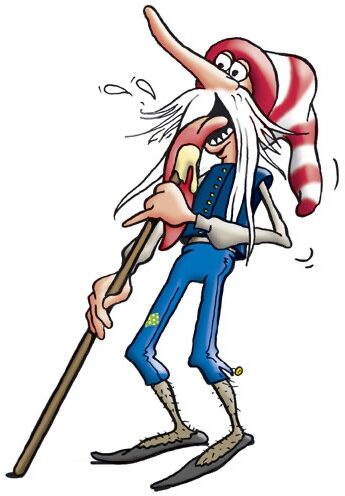
POTTASKEFILL – POT SCRAPER

On the night of December 16th, Pottaskefill sneaks into Icelandic homes with his sights set on the kitchen. His nickname, “Pot Scraper,” says it all—this mischievous Yule Lad is known for stealing unwashed pots and licking them clean.
While he’s not helping with chores, his antics might leave you with fewer dishes to wash—just don’t expect him to return the pots! His obsession with leftover scraps makes him one of the cheekiest brothers in the lineup.
ASKASLEIKIR – BOWL LICKER
The night of December 17th is reserved for Askasleikir, the Bowl Licker. This sneaky Yule Lad hides under beds, waiting for the perfect moment to grab wooden bowls left behind after evening snacks.
Traditionally, Icelanders used askur—lidded wooden bowls—for meals. Askasleikir’s favorite trick was to quietly steal these bowls and lick them clean, leaving no trace of leftovers. His antics might sound gross, but in a house full of hungry trolls, every morsel counts!

HURÐASKELLIR – DOOR SLAMMER
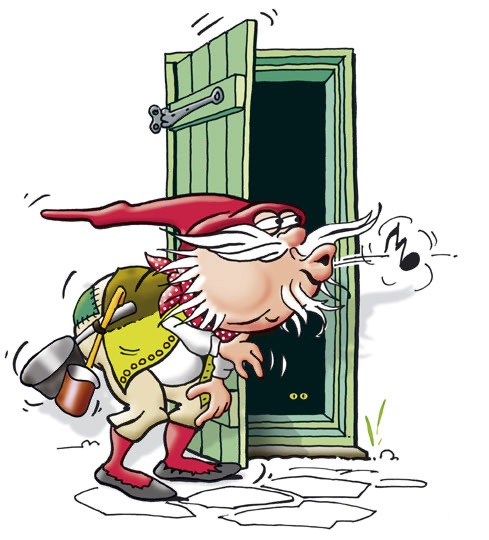
The night of December 18th belongs to Hurðaskellir, the Door Slammer. Known for his mischievous and noisy antics, he loves stomping around Icelandic homes and slamming doors loudly.
His goal? To make sure no one in the house gets a peaceful night’s sleep! While other Yule Lads focus on stealing food or playing sneaky pranks, Hurðaskellir is all about chaos and disruption. Families may have been extra careful with their doors, but no one was safe from his noisy tricks during the Christmas season.
SKYRGÁMUR – SKYR GOBBLER
Skyrgámur, the Skyr Gobbler, appears on December 19th. His obsession with Skyr, a traditional Icelandic yogurt, knows no bounds. If you’ve stocked up on this creamy, high-protein delight, beware!
Skyrgámur is infamous for clearing out entire supplies of this beloved treat, leaving families without their favorite snack. His love for Skyr highlights just how much Icelandic culture revolves around this staple food, making him a humorous yet relatable figure during the Christmas season.
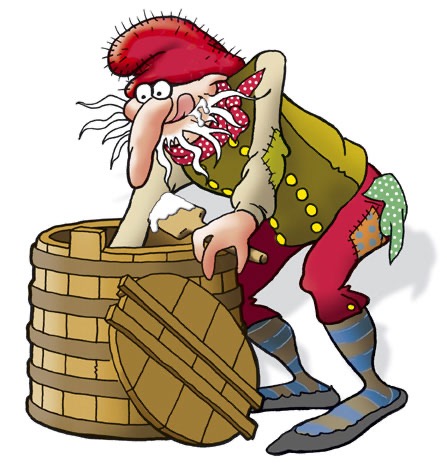
BJÚGNAKRÆKIR – SAUSAGE SWIPER

On December 20th, Bjúgnakrækir, or Sausage Swiper, arrives with one goal in mind: stealing sausages, especially the smoked kind—this mischievous Yule Lad will stop at nothing to get his fill.
He’s notorious for sneaking into kitchens and pantries, using his wits to snag sausages hanging to dry or left unattended. If you’re preparing traditional Icelandic smoked meats this holiday season, watch out, or you might find yourself without a sausage to serve!
GLUGGAGÆGIR – WINDOW PEEPER
The night of December 21st brings Gluggagægir, or Window Peeper, skulks into town. True to his name, this sneaky fellow peers through windows, scouting for treasures or treats to swipe.
His curious nature and penchant for spying make him one of the more unsettling Yule Lads. While he’s less destructive than his brothers, his habit of peeking into homes makes people uneasy—so it’s a good idea to keep your curtains drawn if you don’t want an uninvited audience during the holidays!
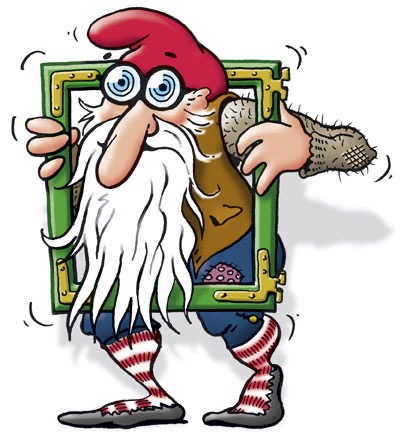
GÁTTAÞEFUR – DOOR SNIFFER
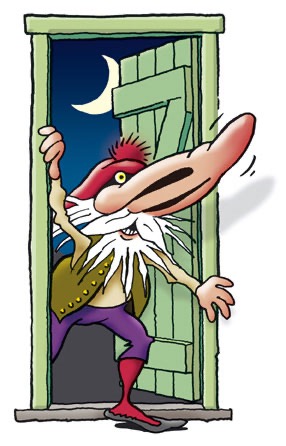
If you’re planning any Christmas baking, beware of Gáttaþefur, the Door Sniffer! On the night of December 22nd, this Yule Lad ventures down from the mountains, guided by his enormous nose and insatiable love for the scent of Christmas treats.
His keen sense of smell leads him to every home where baked goods are cooling, and no loaf of bread or holiday cake is safe from his sniffing prowess. Be prepared to guard your Christmas delicacies, as Gáttaþefur’s sweet tooth knows no bounds!
KETKRÓKUR – MEAT HOOK
On December 23rd, Ketkrókur, or Meat Hook, makes his descent. Armed with a hook, he’s on a mission to steal any meat left out in Icelandic homes, especially hangikjöt (smoked lamb).
This mischievous troll embodies love for traditional Christmas foods, so if you’re preparing a feast, you’d better guard your meat carefully—or you might end up with an empty platter before Christmas even begins!

KERTASNÍKIR – CANDLE BEGGAR

The final Yule Lad, Kertasníkir, makes his appearance on Christmas Eve. He should get an appointment with a psychotherapist as soon as possible, as he is by far the biggest weirdo on the crew.
Unlike his brothers, his peculiar obsession isn’t food but candles! Back in the old days, candles were a vital source of light during the long winter nights, and they were often made of animal fat, making them edible.
Kertasníkir would creep into homes to steal these precious light sources, leaving children and families in darkness.
* Images of the Yule Lads have been used with the kind permission of the “MS” Iceland Dairies (Mjólkursamsalan) / https://jolamjolk.is. Im very grateful for their support in showcasing these beloved Icelandic Christmas characters.
WHAT IS THE CHRISTMAS BOOK FLOOD IN ICELAND?
Known as “Jólabókaflóð,” this charming tradition is a highlight of the Christmas season in Iceland and reflects the country’s love for literature. It involves giving and receiving books as gifts on Christmas Eve and enjoying them that same night, often paired with hot chocolate or another cozy drink.
The roots of this custom trace back to World War II, when import restrictions made most products scarce, but paper was relatively abundant. Books became a practical and meaningful gift, and over time, this turned into a beloved Christmas tradition.
Every year, the Jólabókaflóð begins in late November when publishers release a flood of new titles. This tradition not only celebrates Iceland’s rich literary culture (fun fact: one in ten Icelanders will publish a book in their lifetime) but also emphasizes the value of quality time and the joy of reading during the holiday season.
EXPLORE THE CHRISTMAS REYKJAVIK
During the Christmas season, Reykjavik transforms into a magical wonderland filled with festive lights, vibrant decorations, and unique attractions. The city’s Christmas markets are a must-visit, offering a warm and lively atmosphere for both locals and visitors. These markets feature charming stalls selling handmade crafts, Christmas decorations, and delicious Christmas foods like smoked meats and sweet pastries. It’s the perfect spot to find meaningful gifts or simply enjoy the scent of mulled wine and freshly baked treats filling the air.
The highlight of the season is the ice rink, located in the heart of Reykjavik. Surrounded by sparkling Christmas lightsand a festive ambiance, the rink invites everyone—whether experienced skaters or beginners—to glide across the ice. Skating here under the twinkling lights is an unforgettable part of the Christmas celebrations in Iceland.
Last week, Reykjavík’s Mayor announced an ambitious plan to make the city the international capital of Christmas. Significant funds from the city’s budget have been dedicated to achieving this vision.
TRADITIONAL ICELANDIC CHRISTMAS FOOD
For Icelanders, Christmas Eve begins at 6 PM with the sound of bells ringing from the Dómkirkjan church in Reykjavík, signaling families to gather for Christmas dinner. This meal is the highlight of the season, featuring a variety of beloved dishes passed down through generations.
After dinner, the evening continues with gift-giving, where it’s common to receive a book, Christmas candles or a new clothing. For many, the night concludes with midnight mass, a cherished tradition for those celebrating the religious aspects of the holiday.
Like everywhere else, Christmas foods play a vital role in bringing families together. The flavors reflect the country’s rich history and culture. Let’s take a closer look at some of the most iconic dishes served during this festive time.
PIPARKÖKUR
One of the most beloved treats during the Christmas season in Iceland is Piparkökur, a traditional Scandinavian gingerbread cookie with a hint of cloves. For many Icelanders, the spicy and sweet flavor of these cookies is the ultimate taste of Christmas.
Baking and decorating Piparkökur is a cherished Christmas tradition in Icelandic homes. Families gather to roll out the dough and cut it into festive shapes like stars, hearts, or Chrismats tree’s. Children love decorating these cookies with colorful icing, making each one uniquely their own. The experience is less about perfection and more about creating joyful memories together, with the delicious cookies as a sweet reward for everyone’s efforts.
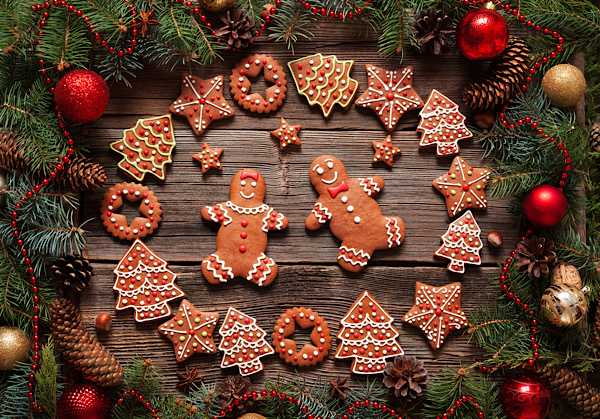
CHOCOLATE COOKIES SARAH
Chocolate cookies, Sarah, a decadent Christmas treat with a rich almond macaroon base and a hint of coffee flavor, have become a beloved part of Christmas in Iceland. Originally created in Denmark to honor French actress Sarah Bernhardt, these luxurious cookies gained popularity after their recipe was published in an Icelandic culinary magazine.
Since then, these indulgent cookies have found a permanent place in Icelandic homes during the holiday season. Their delicate combination of flavors makes them a favorite on dessert tables, symbolizing both the influence of European culinary traditions and Icelanders’ love for sweet holiday treats.
LAUFABRAUÐ
One of the most unique and artistic Christmas foods is laufabrauð. These thin, crispy breadcakes are as much a visual delight as they are a tasty treat. With a diameter of about 15 to 20 cm (6 to 8 inches), laufabrauð is decorated with intricate geometric patterns, often resembling delicate leaves.
Traditionally, families gather to carve these designs into the dough before frying the bread until golden and crispy. The making of laufabrauð is more than just food preparation—it’s a cherished Christmas tradition, bringing generations together to share in the creativity and joy of the season.
Laufabrauð is typically served as a side dish during Christmas meals, pairing perfectly with smoked meats and other festive dishes. Its crunch and light flavor make it a quintessential part of the Icelandic holiday feast.

HANGIKJÖT AND HAMBORGARHRYGGUR
No Christmas feast is complete without two classic meat dishes: hangikjöt and hamborgarhryggur. These traditional meals are central to Christmas celebrations, bringing families and friends together around the dinner table.
Hangikjöt, a smoked lamb or mutton dish, is slowly cooked and sliced thin for serving. The unique smoking process gives the meat a rich, smoky flavor and aroma, evoking the essence of the Icelandic countryside. It’s a dish that holds a special place in culture and memories.
On the other hand, hamborgarhryggur is a glazed ham, often prepared with a sweet and savory glaze that perfectly complements its tender texture. Both dishes are typically served with caramelized potatoes, green peas, red cabbage, and a creamy béchamel-style sauce, creating a hearty and satisfying holiday meal.
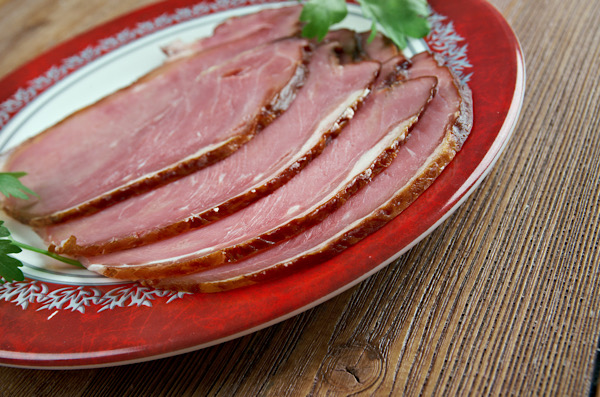
ICELANDIC CHRISTMAS DRINKS
During Christmas in Iceland, traditional drinks play a big role in bringing warmth and cheer to the holiday season. From cozy steaming beverages to refreshing cold ones, these Christmas drinks add a special festive touch to every celebration.
Let’s explore some of the most popular drinks that locals enjoy during the holidays.
MALT OG APPELSÍN
No Christmas dinner in Iceland is complete without Malt og Appelsín, a beloved non-alcoholic holiday drink that has become a staple at the festive table. This unique beverage combines two iconic Icelandic sodas: Malt, a rich, malty-flavored drink, and Appelsín, a citrusy orange soda with a refreshing zest.
The result? A delicious and fizzy blend that perfectly balances the sweetness of Malt with the tangy brightness of Appelsín. It’s a drink that complements traditional Christmas foods, making it a must-have for families celebrating the season.
JÓLAGLÖGG
Jólaglögg, or Christmas mulled wine, is a warm, spiced beverage that embodies the festive spirit of Icelandic Christmas. This aromatic drink is made by gently heating a mixture of red wine, vodka, and a medley of spices such as cinnamon, cloves, cardamom, and ginger. Raisins and a twist of orange peel are added, creating a rich and complex flavor profile.
The beauty of Jólaglögg lies in its versatility. Every family often has their own unique recipe, adding a personal touch to this holiday classic. Some versions have a more pronounced citrus kick from the orange peel, while others emphasize the warmth of cinnamon or the boldness of cardamom. The raisins add a hint of sweetness and texture, making each sip even more delightful.
Jólaglögg is traditionally served in small mugs or cups, often garnished with a cinnamon stick or sliced almonds for an extra festive flair. It pairs perfectly with Piparkökur, spiced gingerbread cookies, making it a favorite treat during cozy holiday gatherings.

JÓLABJÓR
Jólabjór, or Christmas beer, marks the start of the holiday season in Iceland and is one of the most anticipated traditions. Local breweries release their special Christmas editions, each offering unique blends and flavors that embody the festive spirit.
These seasonal brews often feature aromas and tastes of cinnamon, chocolate, licorice, plums, caramel, nuts, raisins, and molasses, giving them a distinct richness and darker color. To enhance the celebratory feel, Jólabjór typically has a slightly higher alcohol content than regular beers, providing extra warmth during the chilly Icelandic winter.
From its rich taste to its celebratory nature, Jólabjór is more than just a drink—it’s an integral part of Christmas celebrations in Iceland. Perfect for cozy winter nights, this holiday brew truly adds a touch of cheer to the frosty season.
NEW YEAR’S TRADITIONS
New Year’s Eve in Iceland is lively and unforgettable, filled with family, food, and festivities. The evening begins in a similar fashion to Christmas eve, with families gathering around 6 p.m. for a grand New Year’s Eve dinner. After the meal, the focus shifts from the dinner table to the outdoors as locals head to community bonfires.
At these bonfires, Icelanders come together to sing, dance, and enjoy the warmth of the flames, creating a sense of unity. Once the bonfires conclude, everyone rushes home for a special treat—an annual comedy sketch show at 10:30 p.m. that humorously reflects on the past year.

After the laughter dies down, it’s time for what Icelanders love most: fireworks. With fireworks being restricted throughout the year—except from December 28 to January 6—the New Year’s celebration is the perfect time for locals to make up for lost time. Families and friends gather to light up the skies, creating a dazzling display of colors and sounds that last well into the night.
Here’s an interesting fact: fireworks in Iceland aren’t provided by the state. Instead, they’re sold in seasonal shops run by Slysavarnafélagið Landsbjörg—the Icelandic Association for Search and Rescue. These sales are a major source of funding for the organization, making every firework bought an indirect contribution to lifesaving efforts across Iceland.

NEW YEAR’S EVE BONEFIRES
Bonfires have long been a symbolic part of New Year’s eve in Iceland, dating back to the 1700s. They are lit to represent the “burning” of the old year, making way for the new one. These towering flames are a central gathering point for families and friends, bringing people together to sing, dance, and share in the joy of the season.
A fascinating aspect of these bonfires is the connection to elves, which are deeply rooted in Icelandic folklore. During these gatherings, songs about elves are often sung, a tradition that reflects a unique cultural belief. According to folklore, elves travel between dimensions on New Year’s Eve to find their new homes. The light of the bonfires is thought to guide them safely through the long winter darkness.

ÁRAMÓTASKAUP
Áramótaskaup is a unique Icelandic tradition that adds humor and reflection to New Year’s Eve. This satirical television show reviews the year’s events with sharp wit and comedic commentary, making light of everything from politics to pop culture. It has become a beloved way for Icelanders to end the year with a laugh.
Originally starting as a radio program in the late 1940s. Áramótaskaup later transitioned to television and has been a staple of New Year’s Eve ever since. Its biting humor and playful critique of current affairs provide a moment of unity as people across the country.
CONCLUSION
The New Year and Christmas traditions in Iceland offer a holiday experience like no other. From the mischievous charm of the Yule Lads to the vibrant fireworks displays, these customs showcase the rich cultural heritage and deep sense of community that Icelanders hold dear.
Whether you’re captivated by the magical folklore, the cozy tradition of exchanging books on Christmas Eve, or the warmth of bonfire gatherings, Iceland’s holiday brings joy and wonder to the season. And, of course, no Icelandic winter would be complete without the hunting for breathtaking Northern Lights, adding a truly magical touch to the festivities.
If you’re lucky enough to visit Iceland during this enchanting time, prepare to be immersed in a one-of-a-kind celebration filled with warmth, tradition, and unforgettable memories.


